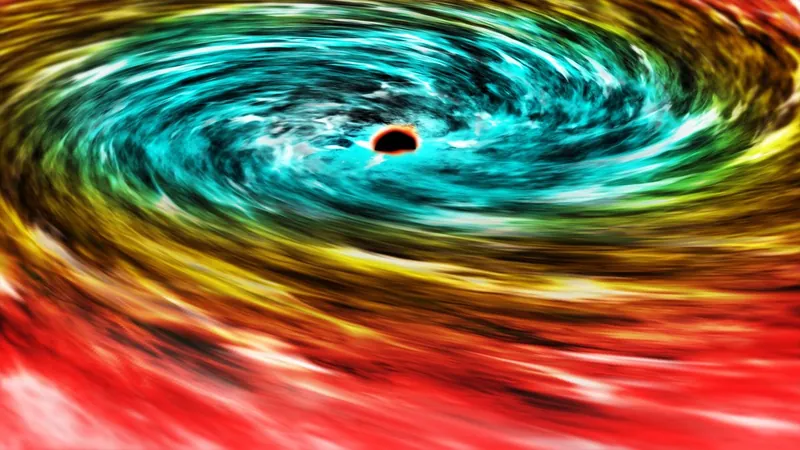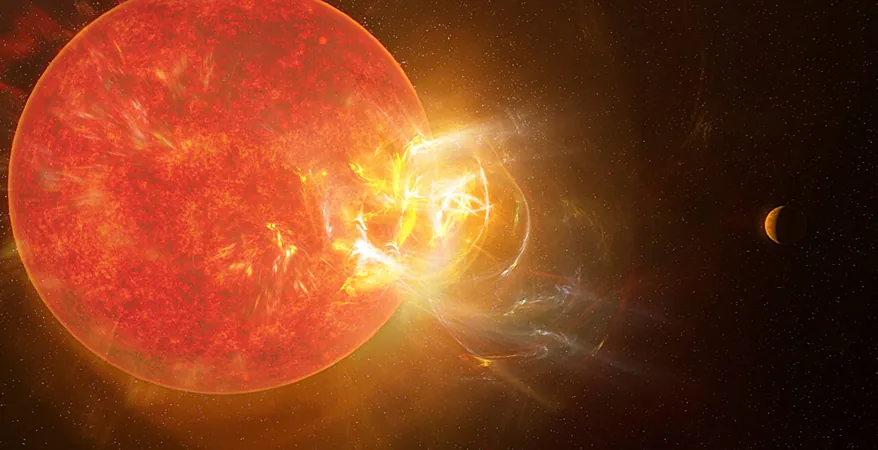
Could Hawking Radiation Have Altered the Form of Our Universe? New Study Suggests Profound Implications
2025-03-23
Author: Rajesh
Introduction
A groundbreaking new study proposes that the controversial radiation theorized by physicist Stephen Hawking may have had a significant impact on the shape and structure of the universe.
Hawking Radiation Explained
In the 1970s, Hawking introduced a revolutionary idea that black holes, traditionally seen as inescapable cosmic vacuum cleaners, might emit radiation. This phenomenon, now known as Hawking radiation, has long remained theoretical due to the incredibly weak emission predicted for stellar and supermassive black holes. However, researchers have recently suggested that primordial black holes, formed shortly after the Big Bang, could have emitted powerful Hawking radiation with measurable effects on the universe.
Impact on Cosmic Structure
According to a study published in the Journal of Cosmology and Astroparticle Physics, this primordial radiation could have shaped the early universe's energy dynamics. The team posits that during a crucial phase of the universe's evolution, primordial black holes may have dominated its energy density and, as they evaporated through Hawking radiation, left detectable imprints on the cosmos we observe today.
The study's authors noted that if the early universe's structure was indeed influenced by these primordial black holes, it could fundamentally reshape our understanding of cosmic history. They stated, "An intriguing possibility is that the early universe underwent a phase in which its energy density was dominated by primordial black holes, which then evaporated through Hawking radiation."
Hawking's Contributions
Hawking's significant contributions merged general relativity and quantum mechanics to explore the baffling characteristics of black holes, revealing they could emit particles, including light. However, the emission rate decreases with increasing black hole mass, making the Hawking radiation from larger black holes nearly impossible to detect with current technology.
Primordial Black Holes
Yet, the scenario changes when considering smaller primordial black holes—thought to have masses less than 100 tons—that thrived in the early universe. These black holes emitted particles at rates substantial enough to affect the cosmic structures, such as galaxies and clusters.
Research Findings
The researchers explained that early cosmological models predict the formation of black holes from overdense regions in the early universe. These primordial black holes would have released a range of particle types through Hawking radiation, possibly shedding light on elusive theoretical particles that might not yield to current particle accelerator experiments.
To further investigate, the research team applied Einstein's equations of general relativity, analyzing the effects of various particle masses and spins on cosmic matter distribution. Their findings propose that if lightweight, fast-moving particles were abundant, this could hinder the formation of small galaxies, as such particles would struggle to gather into dense clusters.
Hawking Relics and Dark Matter
The team also examined the notion that Hawking relics, which might survive until now, could play roles in cosmic radiation—potentially contributing detectable signatures in the cosmic microwave background. Through their analysis, while they didn't find direct evidence of these relics, they managed to constrain the features of the particles and primordial black holes involved.
One intriguing proposition made by the team delves into the possibility that Hawking relics could constitute a form of dark matter, which makes up roughly 85% of the universe's total matter. Nonetheless, current findings suggest that these relics are unlikely candidates for dark matter, as their expected abundance falls short of the necessary thresholds.
Future Prospects
Looking toward the future, the team remains hopeful that advancements in observational technology might someday validate the existence of Hawking radiation and primordial black holes. Such discoveries could open new avenues in understanding the early universe and could revolutionize particle physics, providing the first concrete evidence of both Hawking radiation and black hole evaporation.
Conclusion
The prospect of detecting Hawking relics is not merely an esoteric pursuit; it could dramatically bridge existing gaps in our understanding of the universe's infancy and even alter our conception of fundamental physics. In the words of the researchers, "A discovery of a Hawking relic would illuminate the thermal state of the early universe and set the stage for an exciting new frontier in cosmology and particle physics."
In summary, while Hawking radiation has long lingered in the realm of theory, the implications of this study encourage further exploration—a quest that might redefine our grasp of the universe's origins and its complex structure.




 Brasil (PT)
Brasil (PT)
 Canada (EN)
Canada (EN)
 Chile (ES)
Chile (ES)
 Česko (CS)
Česko (CS)
 대한민국 (KO)
대한민국 (KO)
 España (ES)
España (ES)
 France (FR)
France (FR)
 Hong Kong (EN)
Hong Kong (EN)
 Italia (IT)
Italia (IT)
 日本 (JA)
日本 (JA)
 Magyarország (HU)
Magyarország (HU)
 Norge (NO)
Norge (NO)
 Polska (PL)
Polska (PL)
 Schweiz (DE)
Schweiz (DE)
 Singapore (EN)
Singapore (EN)
 Sverige (SV)
Sverige (SV)
 Suomi (FI)
Suomi (FI)
 Türkiye (TR)
Türkiye (TR)
 الإمارات العربية المتحدة (AR)
الإمارات العربية المتحدة (AR)